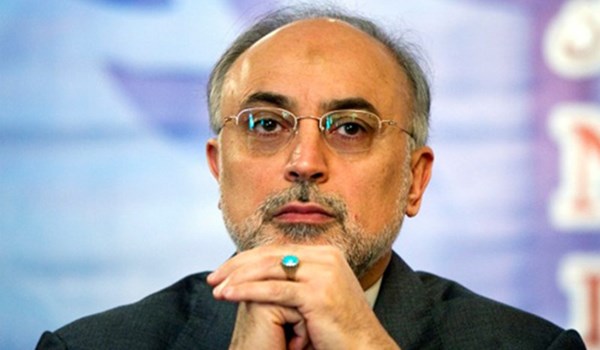Iran’s Nuclear Chief: Evidence Proves IAEA Inspector Carried Suspicious Materials
Head of the Atomic Energy Agency of Iran Ali Akbar Salehi said that AEOI has documented evidence that an inspector of the International Atomic Energy Agency (IAEA) had carried suspicious materials while visiting Natanz nuclear site in Central Iran.

Salehi noted that the inspector failed to give a convincing explanation for carrying the substances, and said, “Generally, inspectors enjoy diplomatic immunity as ambassadors do while on a mission, and such issues have been stipulated in international laws and regulations.”
“For example, if an Iranian AEOI inspector faces an issue in another country, he or she will enjoy diplomatic immunity,” Salehi added.
He, meantime, reiterated that the IAEA inspectors must be checked when they enter Iranian sites and it is naturally done while inspecting nuclear facilities all around the world, and this law is not only related to Iran.
“During the check that was run by machines, one of the inspectors found to be carrying suspicious materials. When she was asked about it, she failed to give convincing and acceptable answers,” Salehi added.
He went on to say that at the end, all the events were documented and filmed, but the AEOI could not keep the inspector as she had diplomatic immunity.
Salehi said Iran has sent a written objection to the IAEA in that regard and announced the country will follow up on the issue.
He said the inspectors carrying suspicious materials is seen by Iran as a move in connection with the malware Stuxnet.
“We have a site in Iran where we keep faulty machinery. And we buy many of the devices (spare parts) from abroad. But they sabotage these devices, so that we would face problems when operating our machinery,” Salehi noted.
He said that the enemies used the malware Stuxnet against Iran.
“They committed industrial sabotage against us and sold faulty equipment to us, but we were vigilant in that regard,” Salehi added.
In early November, the AEOI announced that it had not allowed an inspector of the IAEA to enter a nuclear site for carrying “suspicious” materials.
The AEOI said in a statement that the female inspector left her mission unfinished and flew out of Iran after security staff at the Natanz uranium enrichment facility didn’t let her in.
“As it is protocol, all of the IAEA inspectors’ belongings are closely inspected and scanned before they enter any of the country’s nuclear facilities,” it added.
“Upon this lady inspector’s entry, the security control machines sounded the alarm and denied her entry,” the statement said, adding then that Iran had reported the issue to the IAEA.
Iran also told the IAEA in a report that the inspector’s previous admissions at various sites were all scrapped and as a result, she decided to abort her mission and go back to the Austrian capital of Vienna.
The report also asked the agency to help with investigations into the matter and it accepted.
“The investigations are ongoing,” the AEOI said, noting that the Iranian mission at the IAEA would present it with a comprehensive report on the matter.
The IAEA monitors have been traveling in and out of Iran over the past months amid Tehran’s decision to cut back on its commitments under a 2015 nuclear deal, dubbed the Joint Comprehensive Plan of Action (JCPOA), in response to violations by the US and a lack of action to salvage the accord on part of the European signatories — the UK, France and Germany.
In early November, Iran took the fourth step to scale down its nuclear deal undertakings by injecting gas into 1,044 centrifuges at Fordo nuclear site.
He said enrichment work is underway at Fordow facility due to a breach of commitments by the European parties to the Iran nuclear deal known as the Joint Comprehensive Plan of Action (JCPOA).
“As long as they fail to live up to their obligations, we will continue enrichment at Fordow,” he said.
Salehi said Iran’s objective is to maintain the JCPOA.
In a statement on November 6, AEOI described why it prevented an IAEA inspector from entering Natanz nuclear facilities few days before. “The alarm at the entrance gate was activated when the IAEA inspector, a lady, was passing through,” the statement said, “Therefore, after having her checked, she was prevented from entering the site.”
The statement added that the case was reported to IAEA at the time, calling for the international body to cooperate on conducting the required investigations in this regard.
The inspector left Tehran for Vienna, the statement added.







